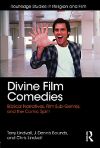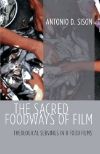- Author(s): Barbara Ann MacLaren,
- When: 2019-03
- Where: Regent University
This thesis explains decisions the author made as the writer and director of the film Something Borrowed, Something Blue. Produced by Regent University in 1995, the 16mm piece was reputed to set new aesthetic and technical standards for student filmmaking at the school prior to the use of digital technology. It also grounded a body of media work that garnered a prestigious filmmaking fellowship for the author from the Virginia Museum of Fine Arts. Famous fine art paintings and techniques such as "chiaroscuro" (light out of darkness) were brought to life in the dramatic art film, to explore the borders that divide body, soul, and spirit from reality, imagination, and delusion.
The narrative depicts Erin, a young artist who neglects her marriage engagement to Michael so she can obsessively court the art establishment culture at her fine arts school. When her sweet and beautiful work clashes with aesthetic doctrines that promote ugliness, vulgarity, and politics, she is pressured to conform in order to be accepted into the art scene. Humorous visuals of zealous artists and decadent artwork reveal the irony of blind devotion, as aggressive elitists claim to promote free expression yet stifle individuality by controlling the content of images, critiques, and gallery shows in the art world — all in pursuit of the "art god".
The paper asserts this friction between light and darkness is the edge of a life and death conflict not only for the film's protagonist, but for all artists who share truth in a secular world dominated by a minority of intolerant, anti-art, anti-life media authorities who attempt to censor speech that contradicts their own worldview. This antagonism is described as the antithesis of creativity, as a spirit of darkness that attempts to consume positive energy, and as evil.
The author uses film stills to illustrate how talent in each creative department supported the vision of the director. She demonstrates it is visually possible to suggest invisible realms of the human soul and the Spirit of God in cinematography. She insists upon the dramatic necessity to depict conflict in films, and the moral sensitivity to portray sex with visual sophistication that respects the intelligence of viewers and preserves the dignity of actors. She compares film form and unity with design of the human body, as related to themes of regeneration and intimacy in a celestial marriage relationship between the biblical bride and groom. Finally, the author explores artistic endeavor within a context of suffering, as one who temporarily set aside her professional aspirations in order to care for orphans.








